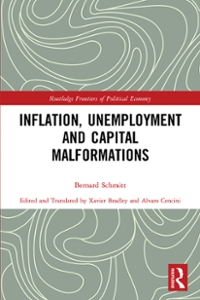Question
This question is based on the article, Yield-curve control could prove a useful tool in the next recession, published by The Economist on February 1,
This question is based on the article, "Yield-curve control could prove a useful tool in the next recession," published by The Economist on February 1, 2020. The article discusses the effectiveness of conventional and unconventional monetary policies and asks whether additional policy tools may be needed for dealing with the next recession.
Conventional monetary policies consist of open market operations and the discount rate and minimum reserve requirement adjustments, all of which are aimed at guiding short-term interest rates to desirable ranges. The unconventional monetary policies are other tools that central banks may use. The article mentions three unconventional monetary policies, namely, negative interest rates, quantitative easing (QE), and yield curve control.
(a)According to the article, what are the reasons why central banks have turned to unconventional monetary policies in the past two decades? What countries have experienced the limitations of conventional monetary policy tools in the past two decades, and what events have prompted the wider use of unconventional tools?
(b)According to the article, have negative interest rate policy been implemented anywhere? What are the disadvantages of negative interest rates as an unconventional monetary policy tool?
(c)According to the article, how does quantitative easing work? What is the difference between QE and open market operations? What are the limitations of QE?
(d)According to the article, how does yield curve control work? What are the similarities and differences of yield curve control with the open market operations?
Step by Step Solution
There are 3 Steps involved in it
Step: 1

Get Instant Access to Expert-Tailored Solutions
See step-by-step solutions with expert insights and AI powered tools for academic success
Step: 2

Step: 3

Ace Your Homework with AI
Get the answers you need in no time with our AI-driven, step-by-step assistance
Get Started


